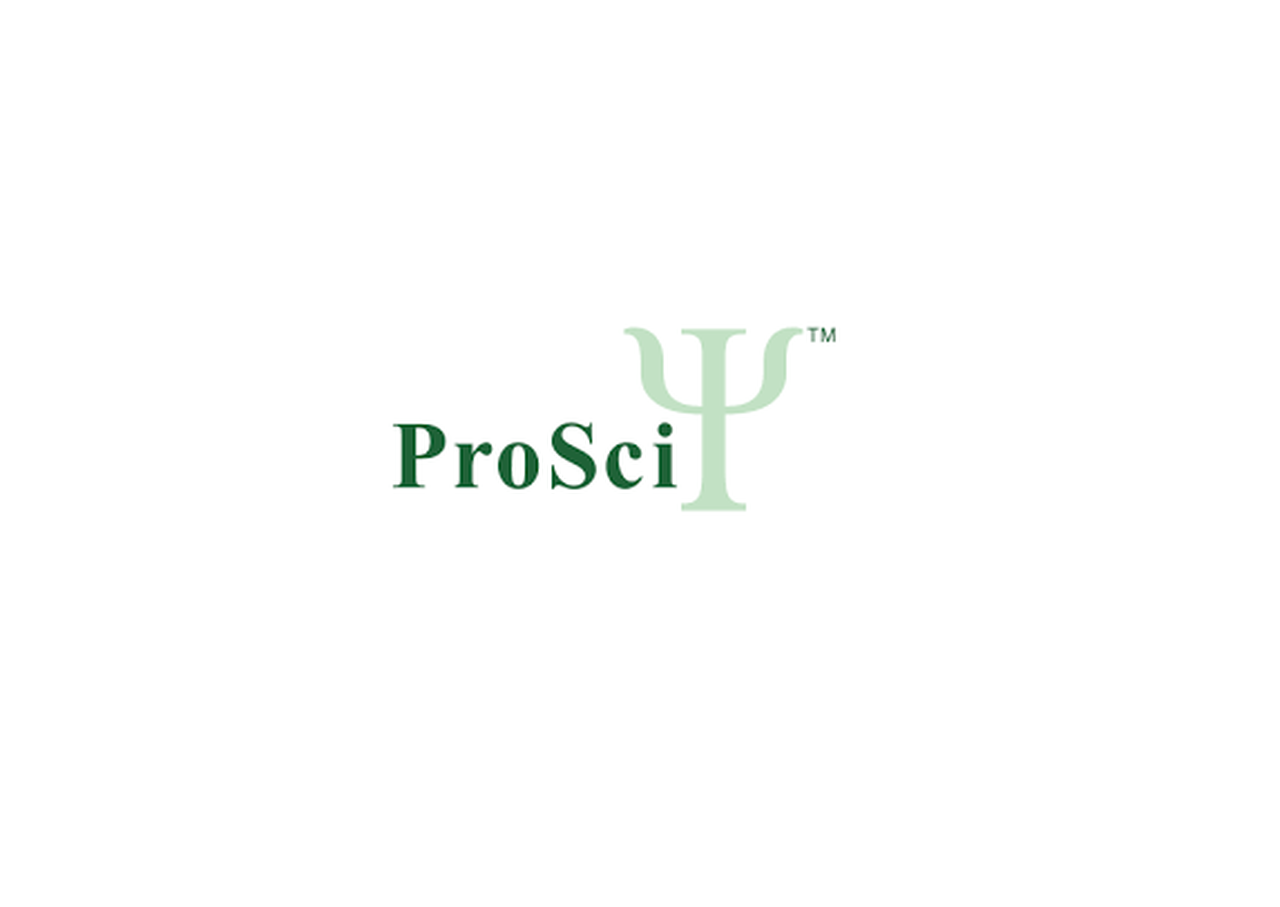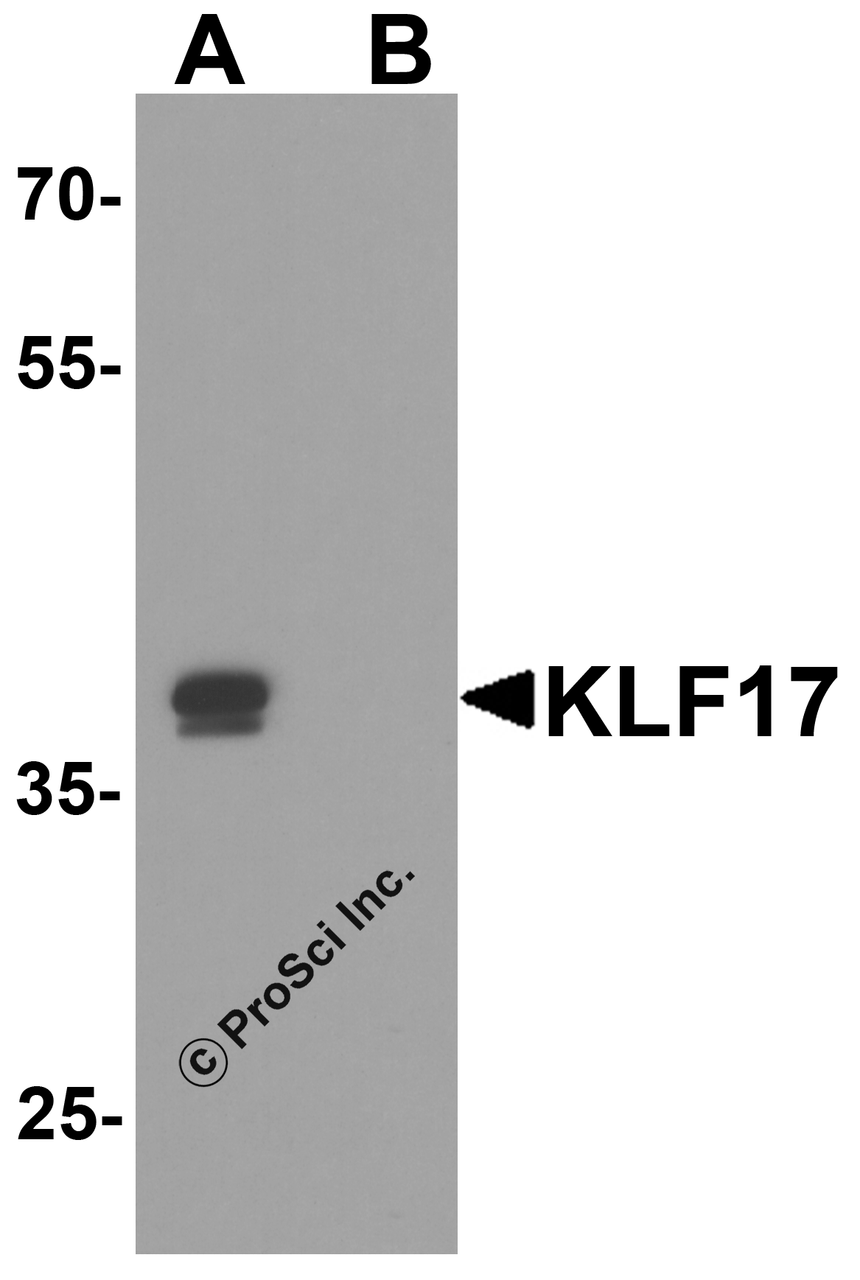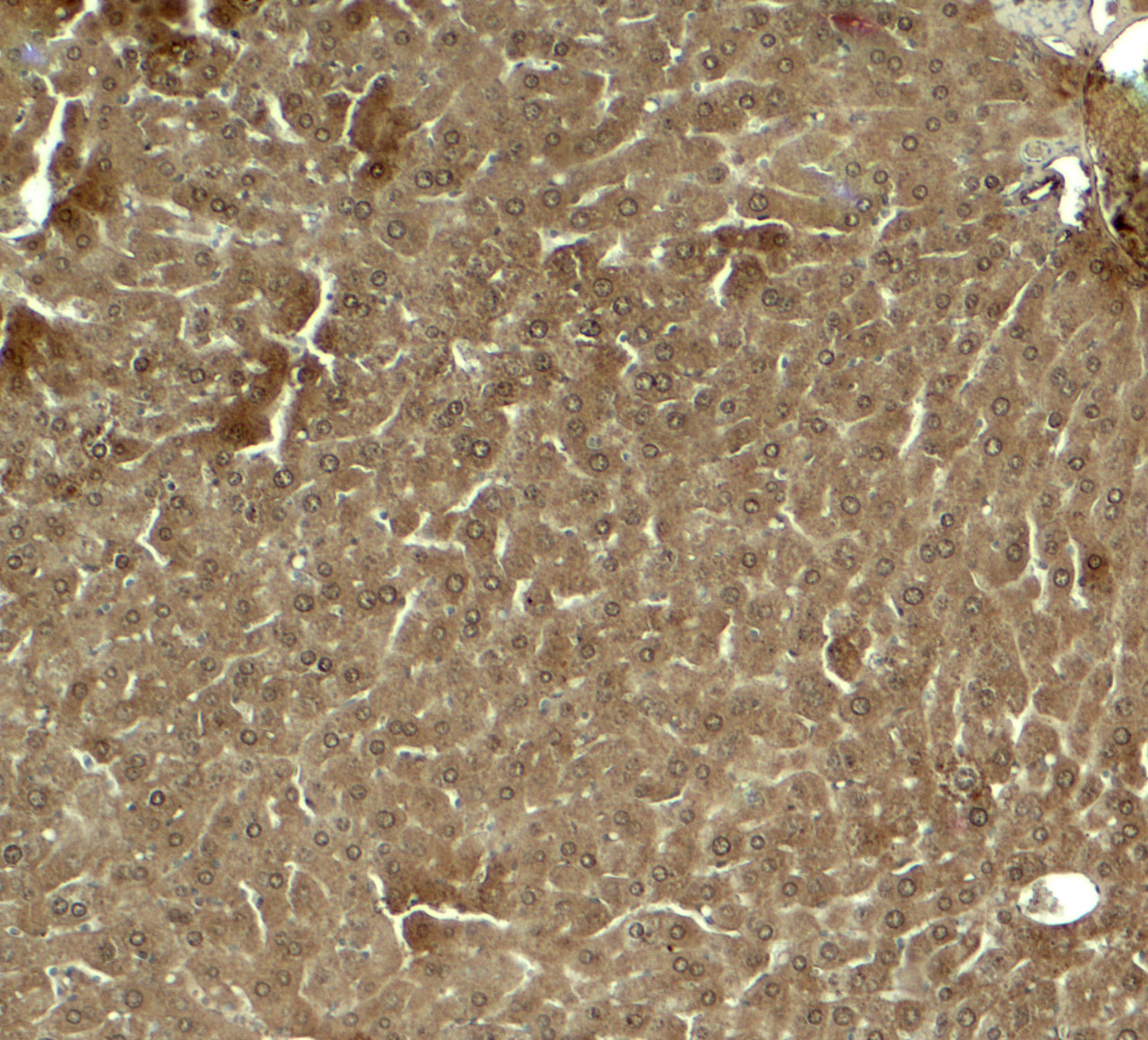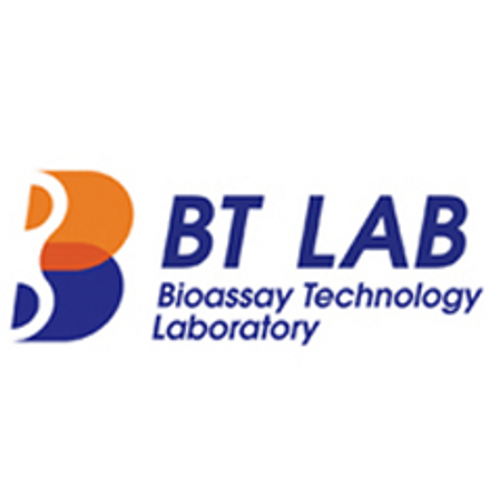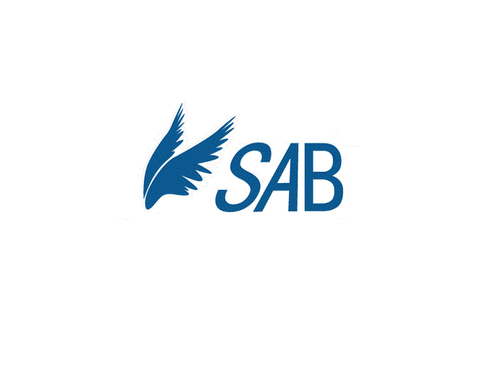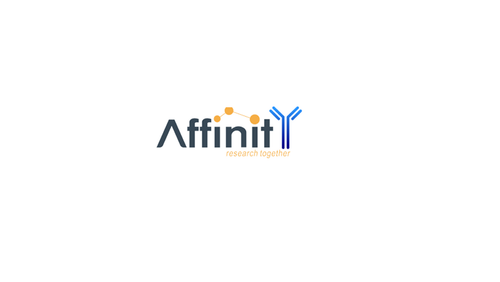Product Description
KLF17 Antibody | 8041 | ProSci
Host: Rabbit
Reactivity: Human, Mouse, Rat
Homology: Predicted species reactivity based on immunogen sequence: Pig: (81%) , Chicken: (79%)
Immunogen: KLF17 antibody was raised against a 17 amino acid peptide near the carboxy terminus of human KLF17.
The immunogen is located within the last 50 amino acids of KLF17.
Research Area: Cancer
Tested Application: E, WB, IHC-P
Application: KLF17 antibody can be used for detection of KLF17 by Western blot at 1 - 2 μg/ml. Antibody can also be used for immunohistochemistry starting at 5 μg/mL.
Antibody validated: Western Blot in rat samples and Immunohistochemistry in mouse samples. All other applications and species not yet tested.
Specificiy: KLF17 antibody is human, mouse and rat reactive. At least two isoforms of KLF17 are known to exist; this antibody will only detect the large isoform. KLF17 antibody is predicted to not cross-react with other KLF proteins.
Positive Control 1: Cat. No. 1464 - Rat Liver Tissue Lysate
Positive Control 2: N/A
Positive Control 3: N/A
Positive Control 4: N/A
Positive Control 5: N/A
Positive Control 6: N/A
Molecular Weight: Predicted: 28, 39, 43 kDa
Observed: 38 kDa
Validation: N/A
Isoform: N/A
Purification: KLF17 antibody is affinity chromatography purified via peptide column.
Clonality: Polyclonal
Clone: N/A
Isotype: IgG
Conjugate: Unconjugated
Physical State: Liquid
Buffer: KLF17 antibody is supplied in PBS containing 0.02% sodium azide.
Concentration: 1 mg/mL
Storage Condition: KLF17 antibody can be stored at 4˚C for three months and -20˚C, stable for up to one year.
Alternate Name: Kruppel-like factor 17, zinc finger protein 393, ZNF393, Zfp393
User Note: Optimal dilutions for each application to be determined by the researcher.
BACKGROUND: KLF17, also known as ZNF393, is a member of the Sp/KLF family of transcription factors (1, 2) . KLF17 binds to the promoter and negatively regulates the transcription of Id-1, a key metastasis regulator in breast cancer (3) . Suppression of KLF17 promotes breast cancer cell invasion and epithelial-mesenchymal transition (3) . Down-regulated KLF17 expression is also associated tumor invasion and poor prognosis in hepatocellular carcinoma, suggesting that the level of KLF17 expression can serve as a prognostic indicator (4) .
 Euro
Euro
 USD
USD
 British Pound
British Pound
 NULL
NULL

